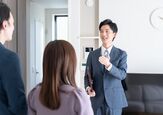Clothes Wringer Alternatives: 10 Simple Clothes Wringer Options

The invention of the washing machine and spin cycle has improved the lives of many. If you’re going someplace remote or want to change how you do laundry, a clothes wringer may be an option. If you want to test drive a clothes wringer before purchasing one, use this as a guide for clothes wringer alternatives.
There are several different alternatives to using a clothes wringer, and most you can find already in your home. A plunger, iron, rolling pin, hairdryer, mop bucket, and tumble dryer are clothes wringer alternatives you most likely own. A clothesline, hand-crank dryer, wood stove, and even your hands can function as a clothes wringer, as well.
Do You Need Appliance Installation or Replacement?
Get free, zero-commitment quotes from pro contractors near you.

What Is a Clothes Wringer?
A clothes wringer is a device that consists of two rollers that squeeze water out of wet clothes. The purpose of this device is to eliminate excess water while drying your clothes. Clothes wringers can speed up the drying time on your laundry before hanging them up to dry.
Clothes wringers are perfect for removing water from towels, blankets, sheets, and your everyday laundry. It can remove water from difficult items like jeans, clothing with thicker material, buttons, and zippers.
Clothes Wringer Alternatives
While a clothes wringer may sound like a good idea to remove excess water from clothes, there are several alternatives.
Hang Clothes on a Clothesline
Hang your clothes on a clothesline instead. A clothing rack or clothesline is the traditional way of drying clothes. You’re probably familiar with your mother or grandmother hanging bedding, and maybe even unmentionables, out to dry on the line.
When it’s a warm and sunny day, grab some clothespins, head outside, and hang your laundry on the line. Not only will it save energy, but your laundry will also smell fresh when it’s dry.
Plunging Method
The plunging method is perfect for heavier fabrics that require more effort to dry. This is a great tool that costs very little. With a little bit of elbow grease and a plunger, you can rapidly remove water from your clothes.
Towel and Iron Method
The towel and iron method is a way to dry your clothes and protect them from direct heat and wrinkles. Place a thin towel over an ironing board and lay the washed clothes over the towel. Place another towel on top of your clothing and iron over the towel from edge to edge to dry.
Hand Wringing
This alternative may take a little bit of time to get used to, but it can be done. Hand wringing clothes can take less time than a clothes wringer if you’re willing to put in the effort. This is a cost-effective option to wring out clothes without buying a special tool to do so.
Make sure to squeeze each garment multiple times until no water drips from it. This method is very effective if you want to dry items quickly.
Hand Crank Dryer
A modern-day equivalent to a clothes wringer is a hand crank dryer. A hand crank dryer is easier to use; simply place all garments inside of the unit. You can adjust the thickness of the wringer depending on the clothes and then spin the hand crank.
Towels and jeans require more effort than lighter materials, but this is an excellent alternative to traditional clothes wringers. This is also a good option if you want to save energy and get a good arm workout.
Wood Stove
If you live in a climate where there are winter, rainy months, you probably have a wood stove of some sort. The heat from the wood stove can keep you warm inside of your home and dry your clothes simultaneously.
To dry clothes using a wood stove, place U-shaped hooks on either side of the stove. Attach a clothesline from hook to hook and pin your clothes to the line. You can also put clothes on hangers throughout your home during rainy or cold seasons to air dry.
Rolling Pin
A rolling pin is a simple alternative to a clothes wringer. Place your wet clothing on an even surface, then roll it out as you would dough. Have a towel near to wipe up any water.
Hair Dryer
If you’re running short on time, a hairdryer can be ideal for drying a piece of clothing. This is found in most homes and can quickly blast warm air onto a wet shirt, tie, or another damp item.
Mop Bucket Wringer
Mop buckets with built-in wringers can do a fine job of wringing excess water out of your clothing. To do this, place your clothes in the wringer and push down the lever as you would do for a mop. Any water in the clothing will squeeze out into the bucket.
Tumble Dryer
Tumble dryers work by drawing air from the outside and heating the clothes using a compressor. While this is the easiest alternative to a clothes wringer, it does use a lot of electricity. Instead of re-using the hot air, the dryer filters it through a vent and creates more hot air at the same time.
Even energy-efficient dryers can result in a loss of energy, which can increase your utility bills. Having said that, this is the quickest and more efficient way to dry clothes, especially if it’s a big load. Laundry can be dried within 30 minutes, which is useful for big families and those who are constantly washing clothes.
Advantages and Disadvantages of Clothes Wringers
If you prefer to stick with a traditional clothes wringer than the above-mentioned alternatives, know the advantages and disadvantages.
Pros of Using a Clothes Wringer
There are many times when a clothes wringer can come in handy.
When you’re camping, there’s no dryer in sight. If you plan to be gone for a long time and need to wash clothes, pack a clothes wringer.
This is perfect for RV or camper users, as it’s portable, and there’s no need to use the campground laundromat. If you hang a clothesline outside, you can have fresh-smelling laundry daily.
In a situation where there is no electricity or if your dryer breaks down, a clothes wringer can come in handy. Repairing a dryer can be expensive and time-consuming, but a clothes wringer is there when you need it. In natural disasters, clothes wringers are especially helpful, so include them in your preparedness kit as they don’t require electricity.
If you’re energy-conscious, a clothes wringer is an excellent solution to refrain from using excess electricity. This tool can also save you money on your utilities.
Cons of Using a Clothes Wringer
While there are several advantages to using a clothes wringer, there are some disadvantages, as well.
Slipping clothes in between the two rollers can be difficult and time-consuming, especially for clothing made of thicker material. The process of wringing out your clothes is also relatively labor-intensive. If you have a big load of laundry, you can end up with achy arms.
All in all, you should evaluate your lifestyle and determine if a clothes wringer is a good option for you.
Considerations When Hand Washing Clothes
If the label on your clothing says to hand wash, take it seriously. Hand washing clothes can keep them looking new longer, and while this process does require some effort, it is worth it. When washing clothes by hand, there are some dos and don’ts to keep in mind.
If your clothing says to hand wash only, don’t take this as an opportunity to use your washer’s delicate cycle, instead. The delicate cycle can be too harsh on swimsuits, cashmere sweaters, and silk shirts. You shouldn’t dry-clean these items either.
When hand washing your clothes, don’t twist or wring the water out of them. This can cause them to stretch out or lose their shape. Instead, gently pat dry with a towel and place them on a flat surface to air dry.
Make sure not to use laundry detergents meant for machine washing when hand washing, as the enzymes can deteriorate fabrics. Instead, use a mild detergent that is intended for hand washing your clothes.
Do You Need Appliance Installation or Replacement?
Get free, zero-commitment quotes from pro contractors near you.

Related Questions
Is dry cleaning better for your clothes than a washing machine?
While using a washer and dryer or handwashing your clothing has a place, dry cleaning does offer more advantages. Dry cleaning can get clothes cleaner and keep them looking new longer, as it gives them a like-new appearance every time. With that being said, dry cleaning is better for your clothes. Dry cleaning is considered a soft washing process, unlike the abrasive agitator used in a traditional washing machine. This process preserves your clothes, maintains the color and quality of the fabric, and rarely causes shrinking. Dry cleaning also can give your clothes a deep clean if they are plagued with stains. While clothes that come out of a traditional dryer often look wrinkled, dry-cleaned clothes always look fresh when finished. This takes away the further steps of ironing and other treatments.
What’s the average cost to have something professionally dry cleaned?
The cost to have something professionally dry cleaned will depend on several factors. The item’s size, material, specific service needed, as well as overhead expenses, and employee compensation all go into the price. On average, most single clothing items cost under $20 to dry clean, some even as little as $10 per item.Coats typically cost $13 to $100 depending on the style, while comforters and draperies cost $20 to $40. If you want to dry clean your wedding dress, expect to pay as much as $500. Costs of services will increase based on material, add-on services, and if you prefer eco-friendly cleaners.

Stacy Randall is a wife, mother, and freelance writer from NOLA that has always had a love for DIY projects, home organization, and making spaces beautiful. Together with her husband, she has been spending the last several years lovingly renovating her grandparent's former home, making it their own and learning a lot about life along the way.
More by Stacy Randall














![The 5 Best Angle Grinders – [2022 Reviews & Buyer's Guide]](https://cdn-fastly.upgradedhome.com/media/2023/07/31/9071326/the-5-best-angle-grinders-2022-reviews-buyer-s-guide.jpg?size=350x220)












